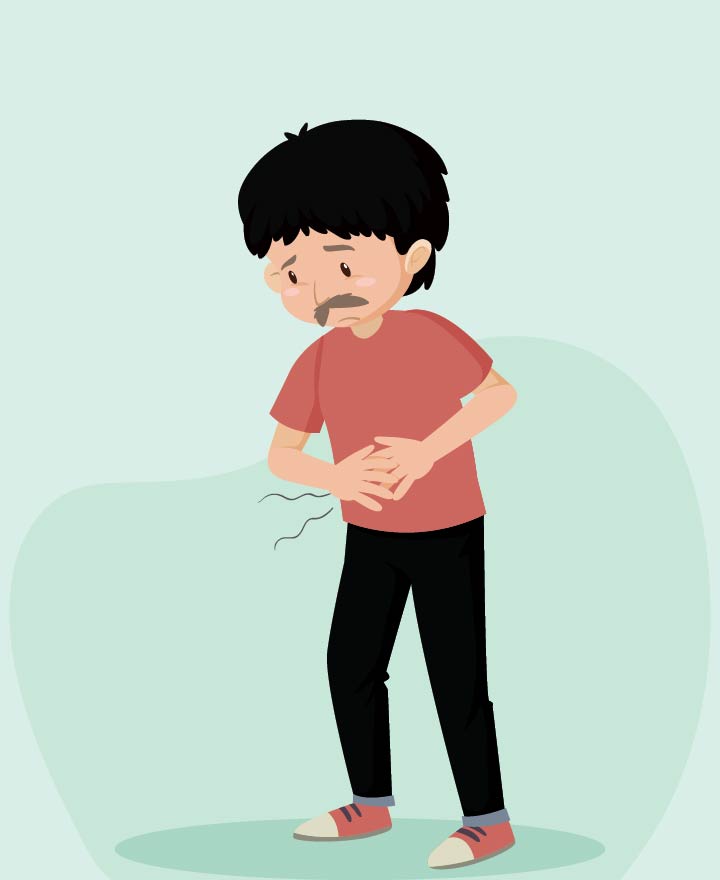

Different Stages of Appendicitis
Appendicitis is a condition when the appendix (a finger-shaped organ attached to the bottom portion of the large intestine) is inflamed or filled with pus. It is important to detect this ailment early and get the right treatment, as it can lead to severe complications if left undetected for a long time. Appendicitis goes through 4 stages of progress and detecting it as early as possible is critical to get it treated properly. Read on to know more.
4 Stages of Appendicitis
These are as follows:
Stage 1 – Early Inflammation
This stage is also known as uncomplicated/early/simple appendicitis. In this stage, individuals may notice a swelling in the abdomen due to inflammation in the lymphoid follicles. Due to this swelling, one may experience a lot of pressure and reduced blood flow in the appendix. The symptoms common in this stage are:
• Pain (usually a dull one) in the upper abdomen, gradually becoming a sharp pain in the right part of the lower abdomen
• Fever (usually mild)
• Lack of hunger
Stage 2 – Suppurative Appendicitis
In 2nd stage, the swelling becomes more profound than before. Pus begins to accumulate inside the inflamed appendix, leading to increased pain and pressure and reduced blow flow in the area. The symptoms most seen in this stage are:
• Increasing pain
• Palpitations
• Frequent bouts of high fever and chills
• Visible swelling in the abdomen
Stage 3 – Gangrenous Appendicitis
This is a severe stage of appendicitis. Since the appendix has been experiencing very little blood flow over a period, the tissues in this area start to necrotize or wither off. The death of tissues is called gangrene. This may lead to the rupture of the appendix, if not treated on time. The symptoms seen in this stage are:
• Very sharp pain that comes in frequent intervals
• Extreme fatigue, paleness, and nausea
• Noticeable mass in the abdomen
Stage 4 – Perforated Appendicitis
This is the last stage of appendicitis, and it is considered a critical stage or a medical emergency. Here, the appendix gets ruptured. As a result, the pus that is accumulated inside gets released into the abdominal cavity, leading to a condition called peritonitis. The symptoms noticed in this stage are:
• A sense of sudden relief from the persisting pain, but immediately followed by intense pain all over the abdomen
• High to very high fever and intense chills
• Nausea and puking
• Severe fatigue
Conclusion
With the advancements in medical technology today, doctors can make use of ultrasound scans, CT scans, and MRIs to detect appendicitis at an early stage, making it easier to treat the condition on time. As patients go through the 4 stages of appendicitis, the pain starts to increase considerably. Hence, it is better to seek medical help right when a slight discomfort is noticed in the abdominal area to rule out any complications.
One of the important components of our overall wellness is also being financially secured. Healthcare emergencies can happen any time, but a good health insurance policy can protect you from such uncertain situations. To know more about Wellness and other health related tips, visit the Wellness Corner.
Source: verywellhealth, docus.ai
Disclaimer: This blog provides general information and discussions about health and related subjects. The information and other content provided in this blog, website or in any linked materials are not intended and should not be considered, or used as a substitute for, medical advice, diagnosis or treatment. Kindly contact your Doctor before starting a new medicine or health regime.
Related Articles
Foods To Avoid When Diagnosed With Arthritis
How to Boost Your Immunity - Best foods & Home Remedies
Benefits of Eating Curd in Summer: Beat the Heat
Causes of Gingivitis- Understanding Oral Health
Published on July 10, 2024














 Health Insurance
Health Insurance  Travel Insurance
Travel Insurance  Car Insurance
Car Insurance  Cyber Insurance
Cyber Insurance  Critical Illness Insurance
Critical Illness Insurance
 Pet Insurance
Pet Insurance
 Bike/Two Wheeler Insurance
Bike/Two Wheeler Insurance  Home Insurance
Home Insurance  Third Party Vehicle Ins.
Third Party Vehicle Ins.  Tractor Insurance
Tractor Insurance  Goods Carrying Vehicle Ins.
Goods Carrying Vehicle Ins.  Passenger Carrying Vehicle Ins.
Passenger Carrying Vehicle Ins.  Compulsory Personal Accident Insurance
Compulsory Personal Accident Insurance  Travel Insurance
Travel Insurance  Rural
Rural